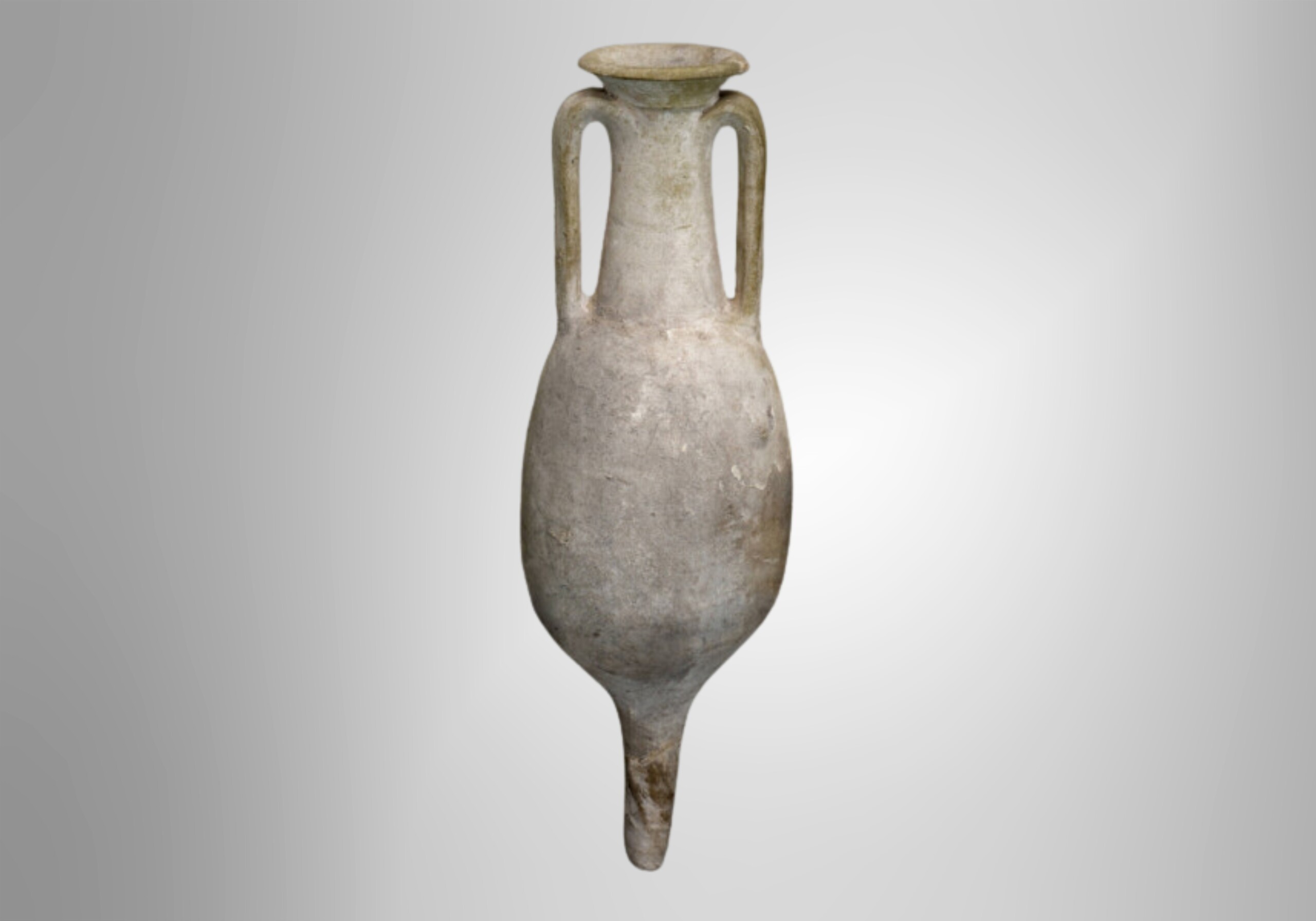
in Ελληνικά / Greek translated by Chrysoula
This object has been translated into 9 different languages by 8 different users
Αυτός ο ρωμαϊκός αμφορέας είναι σχεδόν 2.000 ετών. Βρέθηκε αρχικά στο Κάντιθ της Ισπανίας και επέστρεψε στο μουσείο ως πλήρες παράδειγμα αυτού του τύπου αποθηκευτικού αγγείου. Το μυτερό σχήμα του πυθμένα ήταν έτσι ώστε να βρίσκονται το ένα πάνω στο άλλο με ασφάλεια όταν στοιβάζονται. Είναι χρήσιμο να το συγκρίνουμε με σπασμένα κομμάτια που βρέθηκαν σε ανασκαφές στο Μάντσεστερ – καθώς ήταν κατασκευασμένα από πηλό, ήταν εύκολο στη χρήση και την απόρριψή τους.
Ποια πράγματα χρησιμοποιείτε και πετάτε και ποια πράγματα χρησιμοποιείτε ξανά και ξανά;
Do you have something you’d like to say, in your own language or English, about the object or translation? We’d like to hear what you think.
Translations are community-sourced and for anyone to participate in, however you use your language. For more information, see Community Guidelines.
27 Jun, 2023
Notes on culture
In Rome, there is a port on the river Tiber called Emporio. This port has been used since ancient Roman times and it was particularly useful to receive goods and materials that arrived by sea from the port of Ostia and sailed up the Tiber.
Over the centuries the amphora shards, which were used to hold grain and liquid foodstuffs during transport, accumulated in a mound. This mound became so substantial in size to be awarded the name “Monte dei cocci” (“Mound of shards”).
Today, this mound is commonly known as Monte Testaccio. It is surprising for tourists and Romans to know that the famous Testaccio in fact an artificial hill formed by shards and various debris.
Nowadays, Testaccio is one of the most popular neighbourhoods in Rome. It is one of the cultural centres of the Eternal city but, throughout the centuries, it always managed to maintain its genuine and familiar spirit as Rome’s working-class district.
20 Nov, 2025
I would like to visit Testaccio to buy pizza Ebraica from a famous kosher cake shop called Boccione.